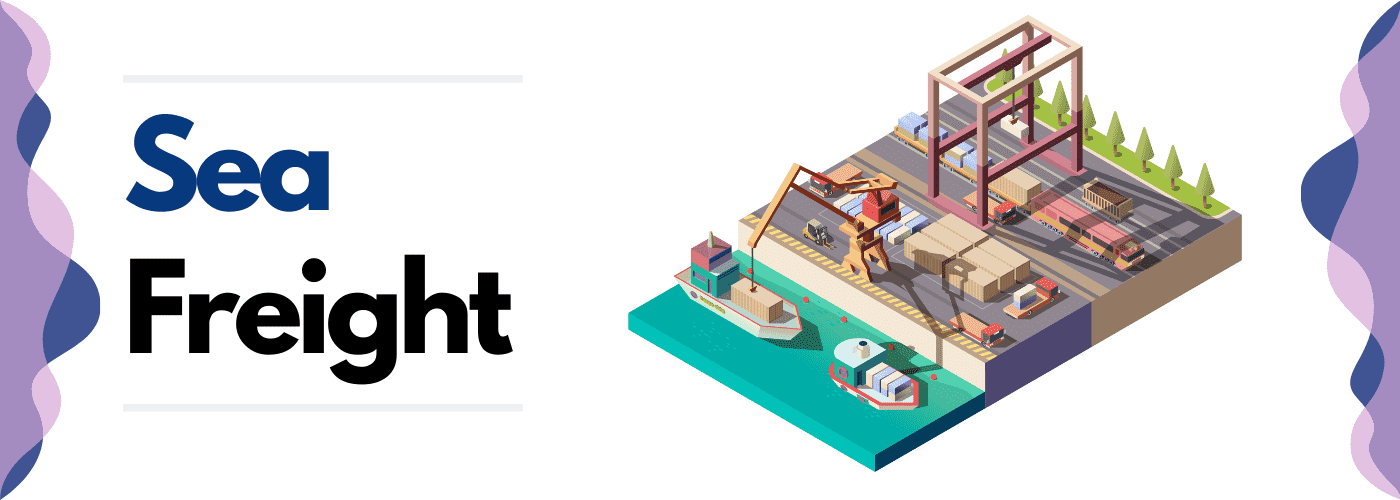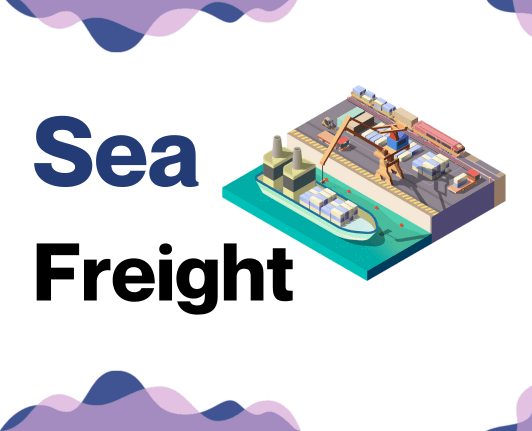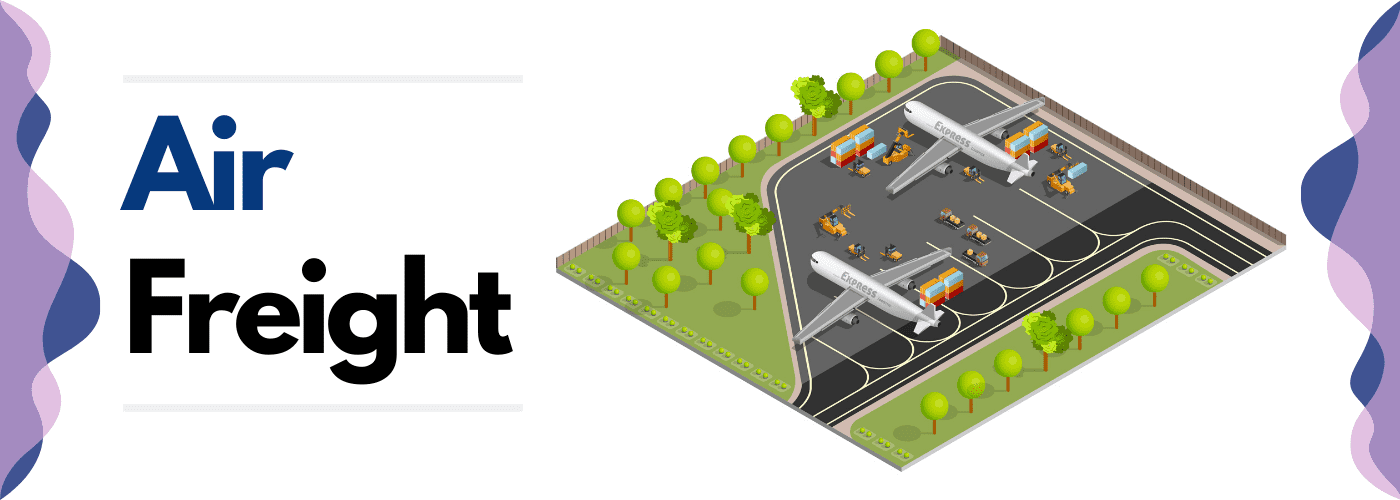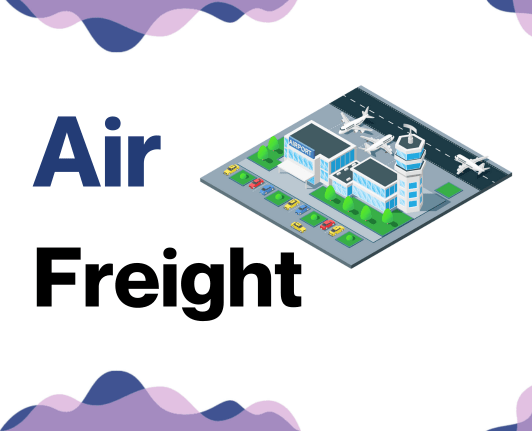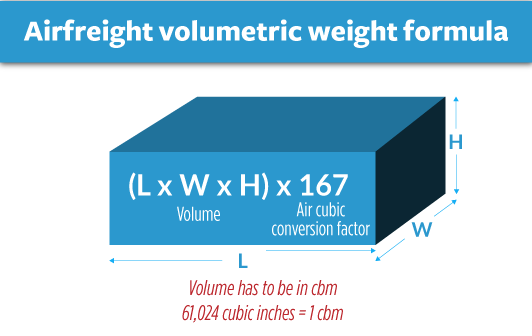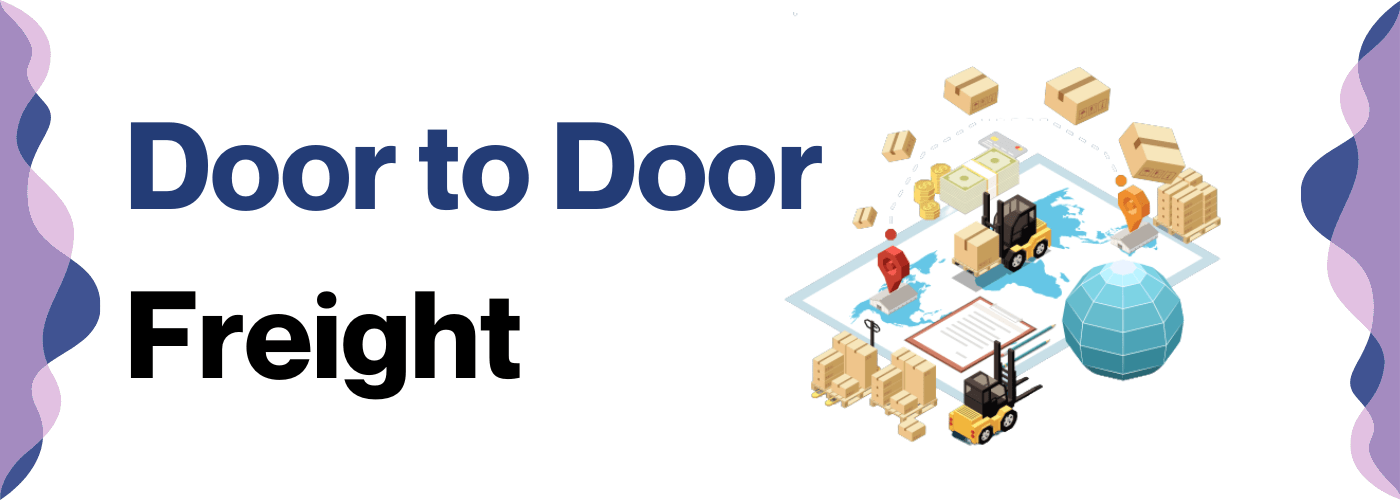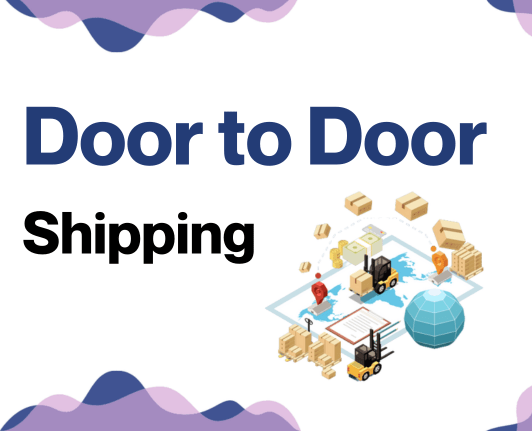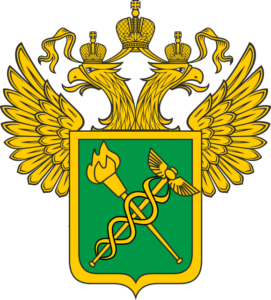Shipping from the UK to Russia? Maybe you're sending a Siberian Husky back home or, more likely, you're a business trying to understand freight rates, transit times, and the labyrinth that is Russian customs regulations. Through this guide, we aim to clarify the complex shipping world and unveil every tiny detail you need to consider. You'll learn about various freight options such as air, sea, road, and rail transport and master the art of handling customs clearance, duties, and taxes.
We'll provide specific advice tailored to businesses wishing to crack the Russian market, equipping you with the confidence to take this big step. If the process still feels overwhelming, let DocShipper handle it for you! As an international freight forwarder, we are more than equipped to turn challenges into success, ensuring your freight reaches its destination as smoothly as possible.
Table of Contents
Which are the different modes of transportation between UK and Russia?
Transporting goods between UK and Russia? It's like a thrilling game of chess - strategic and ever-changing! With long distances and common borders off the table, the best play for you might boil down to air or sea freight. Both contenders can bring power moves depending on your needs: speed, cost-efficiency, the kind of cargo or flexibility with volumes. So, it’s about finding the King to your Queen, the right method that makes your freight journey an effortless checkmate. Stay tuned for a deep dive into each piece's strengths, and plan your perfect game!
How can DocShipper help?
Whether you're shipping from the UK to Russia, or vice versa, DocShipper can streamline the process. We handle everything: air, sea, road, rail transport, customs clearance, and administrative tasks. No hassle, no headache. Need a free estimate? Contact us and we'll respond within 24 hours. Want to speak with an expert? Our consultants are just a phone call away. Rest easy, we've got your shipping needs covered.
DocShipper Tip: Ocean freight might be the best solution for you if:
- You're dealing with large quantities or oversized items. Sea freight offers a budget-friendly way to maximize space, a particularly useful option given the UK's extensive port network.
- Your shipment isn't on a tight schedule. Ocean transport typically takes longer than air or rail, but it offers reliability.
- Your supply chain involves key ports, allowing you to take advantage of a wide-reaching network of sea lanes.
Sea freight between UK and Russia
Trading between the UK and Russia is a game of chess with each move calculated to ensure the result is profitable. The ports of London and Novorossiysk serve as knights on our chessboard, connecting vital industrial centers, and facilitating a thriving trade relationship through ocean shipping. You might see sea freight as a tortoise amongst hares – slow yet steady, carrying high volumes of goods with cost-effectiveness that a rabbit could only dream of.
However, like a challenging chess match, there are often hurdles to cross and pitfalls to avoid. Shippers navigating this ocean route frequently grapple with complex rules and unexpected obstacles. Many rookie mistakes are made, and countless hours lost, in the intricate labyrinth of shipping regulations. It's much like trying to solve a Rubik's cube for the first time! But fret not! By following our best practices and specifications, we'll turn this mind-boggling challenge into a walk in Hyde Park. Together, we'll conquer this chess game one move at a time.
Let's dive in, and transform your understanding of ocean shipping between the UK and Russia in the forthcoming sections.
Main shipping ports in UK
Port of London
Location and Volume: Located on the River Thames, the Port of London is Chain's largest maritime port, moving over 53 million tonnes of cargo annually.
Key Trading Partners and Strategic Importance: It has a strategic location, providing direct access to over 80 ports worldwide. Its main trading partners include countries in the EU, North and South America, and Asia.
Context for Businesses: If you aim to expand your reach within Europe, the Port of London may serve you well, thanks to its extensive direct connections to various crucial global markets.
Port of Southampton
Location and Volume: Situated on England’s south coast, the Port of Southampton deals with approximately 1.5 million TEUs each year.
Key Trading Partners and Strategic Importance: It is known for its significant ties with Far East Asia, especially China, making it an essential gateway for goods coming from Asia.
Context for Businesses: If your business plans involve significant trade with Asian countries, especially China, consider making the Port of Southampton a critical part of your shipping strategy, thanks to its robust Far East network.
Port of Liverpool
Location and Volume: Nestled on the River Mersey, the Port of Liverpool operates approximately 32 million tonnes of cargo annually.
Key Trading Partners and Strategic Importance: The United States, Far East Asia, and the Mediterranean form the primary trading partners of this port.
Context for Businesses: For businesses seeking broad access to both the Atlantic and North America, the Port of Liverpool stands as a significant transshipment hub. If you're planning a robust transatlantic shipping strategy, incorporating Liverpool into your plans may help streamline your operations.
Port of Felixstowe
Location and Volume: Located in Suffolk, East England, the Port of Felixstowe handles more than 3.8 million TEUs per year, earning it the title of UK's busiest container port.
Key Trading Partners and Strategic Importance: Its main trading partners cover a comprehensive global network, with a focus on Europe, Northern America, and Asia.
Context for Businesses: If you require a port with extensive global reach, Felixstowe might be your optimal choice, offering excellent connections to key global markets and providing a versatile range of services which can fit various shipping strategies.
Port of Grimsby and Immingham
Location and Volume: The combined ports of Grimsby and Immingham on the Humber Estuary handle over 5 million tonnes of cargo annually.
Key Trading Partners and Strategic Importance: Its primary trading partners include countries from Europe, especially Nordic nations, Russia, and North America.
Context for Businesses: If your business deals heavily with Northern Europe or North America, Immingham could become an essential part of your strategy, given its well-established trade links and vast facilities dedicated to these specific regions.
Port of Bristol
Location and Volume: Located in southwestern England, the Port of Bristol handles approximately 12 million tonnes of goods per annum.
Key Trading Partners and Strategic Importance: It maintains robust trading relations with North America and European countries.
Context for Businesses: Should your business be targeting the North American market or the wider European region, the Port of Bristol’s extensive capacity and its network in these areas may serve as a valuable component to your shipping strategy.
Main shipping ports in Russia
Port of Saint Petersburg
Location and Volume: Recognised as the largest port of Russia in terms of container transhipment, the Port of Saint Petersburg is situated on the Neva River at the head of the Gulf of Finland. With a shipping volume that consistently exceeds 2 million TEUs in the recent years, it is unquestionably the busiest port in Russia.
Key Trading Partners and Strategic Importance: A bulk of trade is done with nearby European nations such as Germany, Netherlands, Estonia, and other Baltic states. One major achievement of the port revolves around it being a key strategic point on the East-West corridor, connecting European and Asian markets.
Context for Businesses: If you're planning to reach out to the European and Asian markets, the Port of Saint Petersburg could be central to your logistics, being the primary freight hub of the region.
Port of Novorossiysk
Location and Volume: Laying on the Black Sea's northeastern coast, the Port of Novorossiysk is the main Russian port for trading grain and has an impressive shipping volume of 1.5 million TEUs.
Key Trading Partners and Strategic Importance: As the main gateway to the southern part of Russia, Novorossiysk boasts key trading relationships with Turkey, Egypt, and Ukraine. Its significance also lies in it being one of the largest ports in terms of capacity in the Black Sea region.
Context for Businesses: For businesses dealing in grain, oil, and ferrous metals, this should be an irresistible destination, thanks to its dedicated terminals for these commodities.
Port of Vladivostok
Location and Volume: Located in the Sea of Japan, eastern Russia, the Port of Vladivostok is one of the key gateways to Russia from the East and has a shipping volume of over 600,000 TEUs.
Key Trading Partners and Strategic Importance: Serving as Russia's primary Pacific port, Vladivostok's key trading partners include other East Asian countries like Japan, Korea, and China.
Context for Businesses: If your business is targeting East Asian markets or importing from them, Port of Vladivostok with its strategic location and strong trading links could be a crucial part of your strategy.
Port of Kaliningrad
Location and Volume: The landlocked Port of Kaliningrad lies on the southeastern coast of the Baltic Sea and is Russia's only port that is ice-free all year round. It has a shipping volume of around 10 million tons of cargo annually.
Key Trading Partners and Strategic Importance: The port has a well-established trading relationship with Germany, the Netherlands, and Belgium. It holds strategic importance as Russia's western-most port, allowing a significant amount of international sea trade to pass through.
Context for Businesses: For businesses that require uninterrupted shipping throughout the year, the Port of Kaliningrad's round-the-year ice-free status is a significant advantage over many of the more northern ports.
Port of Murmansk
Location and Volume: As the home port of the Russian Arctic fleet, the northern Port of Murmansk port has a shipping volume of almost 18 million tons per year.
Key Trading Partners and Strategic Importance: The port has trading ties with countries like the United States, China, and the United Kingdom. Its strategic importance lies in its location where it can serve the Northern Sea Route.
Context for Businesses: For businesses that deal with crude oil, coal or fish products, the Port of Murmansk is a must-include in your shipping strategy due to its specialised terminals.
Port of Petropavlovsk-Kamchatsky
Location and Volume: Located on the Kamchatka Peninsula in the Pacific Ocean, the Port of Petropavlovsk-Kamchatsky has a volume of over 4.5 million tons of cargo.
Key Trading Partners and Strategic Importance: With its proximity to Asia and the United States, it shares key trade partnerships with Japan, China, and the USA. It is Russia's eastern-most port, making it strategically important for transpacific shipments.
Context for Businesses: This port might be your gateway into the dynamic economies of East Asia, given its established trading links and its unique geographical location.
Should I choose FCL or LCL when shipping between UK and Russia?
When it comes to sea freight between the UK and Russia, there's a golden question. Do you go for Full Container Load (FCL) or opt for Less than Container Load (LCL), also known as consolidation? Your choice can steer the course of your shipping journey, impacting your budget, delivery schedule, and how smoothly the overall process flows. This section digs into the crux of these two options, aiding you to sail through the complexities and dock at a decision that fits your unique shipping goals. Let's dive in!
LCL: Less than Container Load
Definition: LCL (Less than Container Load) shipping refers to a shipment that doesn't fill a complete container. Often consolidated with other goods for the same destination, it's a popular freight forwarding method.
When to Use: LCL shipment is a practical choice when the cargo volume is less than 15 cubic meters (CBM). It provides the flexibility to ship smaller quantities without needing to fill a full container.
Example: Suppose a UK-based furniture company needs to ship 10 CBM of tables to Russia monthly. It wouldn't be cost-efficient and practical to book a full container each time. Opting for LCL freight allows them to share container space with others, reducing shipping costs and providing greater flexibility.
Cost Implications: While per-unit prices may be higher in LCL shipment than full container shipment, smaller businesses benefit because they don't need to commit to a larger quantity. However, there might be additional handling fees due to the consolidation and deconsolidation process. This shipping method is cost-efficient for volumes less than 13-15 CBM.
FCL: Full Container Load
Definition: FCL (Full Container Load) Shipping occurs when a single party reserves an entire container for its goods. Opting for FCL better ensures the safety of your shipment, as the container is securely sealed from your origin (e.g., UK) to your final destination (i.e., Russia), minimizing the risk of damage.
When to Use: FCL shipping is the most cost-effective choice when the volume of your goods is high, specifically more than 13/14/15 CBM.
Example: For instance, your business might be planning to ship heavy machinery parts from Birmingham to Moscow. Assuming each part takes up about 2 CBM, if you're shipping more than seven items, it would be advisable to go for an FCL container.
Cost Implications: When it comes to the cost, FCL shipping quotes will generally be lower than LCL for high volume consignments. The choice between a 20'ft container or a 40'ft container will depend on your cargo's size and weight. Remember, the cost for FCL is calculated per container, rather than by weight or volume, therefore economizing space will give you the biggest bang for your buck.
Unlock hassle-free shipping
Make shipping from the UK to Russia a breeze with DocShipper, your reliable freight forwarder. Our ocean freight experts take into account all key factors such as cost, transit time, and cargo size to advise if consolidation or a full container fits your needs best. Let's simplify your shipping process together. Reach out now for a free, no-obligation estimate on your shipment.
How long does sea freight take between UK and Russia?
Shipping goods by sea freight between the UK and Russia typically takes around 18 days on average. This transit time is subject to variability depending on several factors that include but are not limited to the specific ports being used, the weight and nature of the cargo. For an accurate estimation tailored to your shipment, we strongly recommend reaching out to freight forwarding experts like DocShipper.
How much does it cost to ship a container between UK and Russia?
Determining the exact ocean freight rates or shipping costs between UK and Russia can admittedly be a complex puzzle. Factors like Point of Loading, Point of Destination, the choice of carrier, nature of goods, and even the swing of monthly market fluctuations can cause shipping rates per CBM to vary widely. But, fret not! We understand that balancing costs with time constraints is crucial for your business. That’s where our dedicated shipping specialists step in. They'll delve into the specifics of your shipping needs, addressing all these variables to provide you a tailor-made quote. Remember, we quote on a case-by-case basis ensuring you’re availed the best rates possible. Keep calm and ship on.
Special transportation services
Out of Gauge (OOG) Container
Definition: An Out of Gauge (OOG) container, as the name implies, is designed to carry oversized items that don't fit within the standard container dimensions. These containers have open tops or flat racks for easy loading of bulky cargo.
Suitability: They are an excellent choice for transporting large machinery, industrial equipment, and other oversized items.
Examples: Think heavy construction machinery, large turbines or even boats.
Why it might be the best choice for you: If your business deals with larger than usual cargos, like industrial components that exceed standard dimensions, an OOG container could be your go-to solution.
Break Bulk
Definition: Break bulk involves shipping goods that are packaged, often on pallets or in crates, but not containerized. This allows for greater flexibility in accommodating various sizes and weights of cargo.
Suitability: It's ideal for different kinds of merchandise such as bagged products, furniture, or machinery pieces.
Examples: A consignment of bagged fertilizer, crates of furniture, or boxed car parts would typically be shipped as break bulk.
Why it might be the best choice for you: If flexibility is of utmost importance to accommodate diverse cargo sizes or to keep costs down, this might be the most reliable option.
Dry Bulk
Definition: Dry bulk shipping handles commodities like grains, coal, or minerals that are transported in large, unpackaged quantities. They're held directly in the hull of the ship rather than being loaded in containers.
Suitability: It's an excellent fit for shippers dealing with large quantities of loose cargo such as agricultural products or construction materials.
Examples: Imagine shipping tons of wheat from UK farms to Russia or shipping raw construction materials like gravel or sand.
Why it might be the best choice for you: If your business involves dealing with massive quantities of loose cargo load, consider the dry bulk shipping method.
Roll-on/Roll-off (Ro-Ro)
Definition: Roll-on/Roll-off, often referred to as RoRo, is a type of ship where vehicles are driven directly onto the ro-ro vessel and safely stowed for sea transportation.
Suitability: This is the most suitable shipping method for vehicles or heavy machinery on wheels.
Examples: Cars, trucks, and trailers, or even rail cars, can be shipped using this method.
Why it might be the best choice for you: If you are in the automotive industry, or your cargo is self-propelled or can be loaded onto a trailer, this is the most straightforward and efficient way to ship.
Reefer Containers
Definition: Reefer containers, also known as refrigerated containers, maintain a constant temperature to protect perishable goods during shipment.
Suitability: Best suited for transporting goods like fruits, vegetables, dairy products or pharmaceuticals.
Examples: Key examples could be shipping UK dairy products to Russia, or ensuring that temperature-sensitive medicines retain their efficacy.
Why it might be the best choice for you: If you deal with perishable or temperature-sensitive goods, look no further than reefer containers, as they can provide the exact conditions your shipment needs.
Remember, choosing the right type of sea freight often depends on the specific needs of your cargo. For a more personalized approach, feel free to contact DocShipper and get a free shipping quote in less than 24 hours. The right solution is always tailored to fit your unique business needs.
DocShipper Tip: Air freight might be the best solution for you if:
- You're facing tight deadlines or need rapid delivery. Air freight is your quickest option, which aligns well with the fast-paced business environment.
- Your shipment is relatively small, under 2 CBM. Air freight is ideal for these more compact loads.
- Your cargo's destination isn't easily reached via sea or rail. This makes air freight a viable option, especially given the extensive network of airports available.
Air freight between UK and Russia
Air transport from the UK to Russia gives your business a speedy and reliable shipping option, especially when handling small, high-value shipments like luxury watches or intricate machinery parts. Why? Air freight takes higher altitudes as its playground, skipping the slow crawl of sea and road transport. Think of it as the cheetah of international shipping- fast, efficient, and on time!
However, it's in the murky depths of cost calculation where many shippers stumble. It's like attending a high-stakes poker game without knowing the rules. Missteps with weight calculations, for instance, can have companies handing over excessive amounts of money. As we go along, this guide will show you how to steer clear of these common pitfalls to get your goods to their destination without breaking the bank.
Air Cargo vs Express Air Freight: How should I ship?
Facing the dilemma of choosing between Air Cargo and Express Air Freight for your UK-Russia shipments? We get it's tough! In simple terms, while air cargo gets your goods a seat on a regular airline, express air freight pitches in with a dedicated plane. In this guide, we'll break down the pros and cons of each option tailored to bolster the efficiency of your specific business needs. Let's untangle the thorns of international logistics, together!
Should I choose Air Cargo between UK and Russia?
Air cargo is a trustworthy and economical option when shipping from the UK to Russia, particularly for cargo of 100/150 kg (220/330 lbs). Leading airlines for this route include British Airways and Aeroflot. With reputable airlines, you benefit from reliable schedules, albeit longer transit times. Specially curated for cost-conscious shippers like yourself, air cargo unravels its true potential in its delivery timelines and volume generosity, best suiting your budgetary preferences.
Should I choose Express Air Freight between UK and Russia?
Express Air Freight is a distinct service offering swift delivery worldwide by utilising cargo planes, devoid of passengers. Ideal for deliveries not exceeding 1 CBM or 100-150 kg (220-330 lbs), this is an excellent option if you seek speed and efficiency. Trusted courier firms FedEx, UPS, and DHL offer this service, ensuring secure and prompt shipment from the UK to Russia. If your delivery size fits this bill and time is of the essence, then speed and security inherent in Express Air Freight is worth your consideration.
Main international airports in UK
Heathrow Airport
Cargo Volume: Heathrow is UK's busiest cargo airport, processing over 1.2 million tons of cargo annually.
Key Trading Partners: The key trading partners are the United States, the European Union, China, India, and Hong Kong.
Strategic Importance: Located in the capital, Heathrow has an excellent network of road and rail connections making it easy to transport cargo to and from the airport.
Notable Features: With access to over 200 international destinations, Heathrow offers a wide range of cargo handling services and dedicated cargo terminals.
For Your Business: If you have high-value goods, or goods that need a quick delivery, the robust security and speedy handling at Heathrow might fit your needs.
Gatwick Airport
Cargo Volume: Although primarily a passenger airport, Gatwick handles more than 96,000 tons of cargo each year.
Key Trading Partners: Major trading partners include the United States, the European Union, Canada, and the Middle East.
Strategic Importance: Located near London, Gatwick is a key air freight hub within the UK's supply chain, especially for perishable goods.
Notable Features: Gatwick offers a dedicated perishable handling center which guarantees temperature control for quick transit.
For Your Business: If you deal with perishable goods, Gatwick's refrigerated facilities might be right for your shipping strategy.
East Midlands Airport
Cargo Volume: The airport handles over 360,000 tonnes of cargo annually, making it the UK's major pure freight airport.
Key Trading Partners: It has considerable trade with the United States, the European Union, and the Middle East.
Strategic Importance: Located in the heart of England, the East Midlands Airport offers convenient access to the country's major cities.
Notable Features: It operates 24/7, which is particularly suitable for e-commerce logistics.
For Your Business: If your business requires frequent and flexible shipping schedules, consider the East Midlands Airport as a prime location for your goods.
Manchester Airport
Cargo Volume: Manchester Airport handles more than 120,000 tons of import and export freight annually.
Key Trading Partners: It has strong connections with both North America and Asia along with significant trade with the European Union.
Strategic Importance: Manchester Airport is a key gateway to the North, with strong rail and road links offering smooth delivery logistics.
Notable Features: Offers cargo services from over 100 airlines, providing businesses with numerous options.
For Your Business: If your business operates in the north of England or needs a wide choice of airlines, Manchester Airport can be an ideal solution.
Stansted Airport
Cargo Volume: Stansted handles over 250,000 tonnes of cargo per year.
Key Trading Partners: The main trading partners are the United States, the Middle East, and the European Union.
Strategic Importance: Situated in South England, Stansted airport offers access to crucial markets like London and the Southeast.
Notable Features: Stansted is known for its large cargo area and specialised cargo handling.
For Your Business: If your business needs expert handling for diverse types of cargo, Stansted Airport can meet your requirements.
Main international airports in Russia
Domodedovo International Airport
Cargo Volume: The airport processes over 391,200 tonnes of shipments per year, contributing greatly to the overall freight volume in the country.
Key Trading Partners: China, Germany, France, Japan, and the USA are among the major trading partners the airport serves.
Strategic Importance: Situated just outside Moscow, Domodedovo plays a crucial role in Russia's economy as a vital gateway for flights linking Europe and Asia.
Notable Features: Domodedovo boasts a modern cargo terminal that provides a wide array of services related to shipping and handling of goods.
For Your Business: If your business largely trades with the mentioned countries, or requires extensive services related to cargo handling, Domodedovo may be your optimal choice.
Sheremetyevo International Airport
Cargo Volume: Sheremetyevo led Russia's airports in cargo turnover in 2022, handling over 490,000 tonnes.
Key Trading Partners: The airport primarily targets the cargo market in Western Europe, Asia, and Americas.
Strategic Importance: It's Russia's largest airport in passenger and cargo traffic, serving as the second primary gateway for cargo transportation in and out of the country.
Notable Features: Sheremetyevo handles all cargo types and offers services like cargo tracking and dedicated cargo flights.
For Your Business: If you require a high volume of shipments with versatile cargo types, this airport's advanced facilities should suit your business needs well.
Ulyanovsk Vostochny International Airport
Cargo Volume: As a dedicated cargo airport, it handles over 120,000 tonnes of cargo per year.
Key Trading Partners: The airport engages in trade primarily with China, South Korea, Germany, France, and the US.
Strategic Importance: Being one of the few airports in Russia designed specifically for handling cargo, Ulyanovsk Vostochny is of considerable importance to the country's economy.
Notable Features: It has a dedicated, expansive cargo handling area and provides 24/7 services.
For Your Business: Businesses that operate round-the-clock or require specific handling resources could benefit significantly from Ulyanovsk Vostochny.
Krasnoyarsk International Airport
Cargo Volume: Krasnoyarsk International Airport handles more than 23,000 tonnes of cargo per year.
Key Trading Partners: The airport routes shipments to Asia-Pacific countries, Europe, and North America.
Strategic Importance: As it possesses an advantageous geographical location in the heart of Russia, it serves as an essential transit hub between China and Europe.
Notable Features: Their cargo services include door-to-door delivery, warehouse handling, and customs processing assistance.
For Your Business: Should your business require a reliable hub for transit shipments between Asia and Europe, Krasnoyarsk's strategic location could be extremely beneficial.
Tolmachevo Novosibirsk International Airport
Cargo Volume: The airport processes upwards of 31,000 tonnes of cargo per year.
Key Trading Partners: Novosibirsk maintains cargo relations primarily with Germany, China, the Netherlands, Japan, and Korea.
Strategic Importance: Its location in Siberia provides an excellent transit point for plane operators, particularly between Europe, Asia, and India.
Notable Features: The airport's cargo terminal operates around the clock and offers options for both regular and irregular shipments.
For Your Business: If your shipping routes often span Europe, India, and Asia, or you need continuous operation times, consider integrating Tolmachevo into your strategy.
How long does air freight take between UK and Russia?
On average, air freight shipping between the UK and Russia takes anywhere from 1-3 days. However, remember that the exact transit time depends on several factors. These include the specific airports involved, the weight of your shipment, and the nature of the goods you're transferring. For a more precise estimate, it's often a good idea to reach out to a reliable freight forwarder like DocShipper.
How much does it cost to ship a parcel between UK and Russia with air freight?
Typically, the average air cargo shipment cost per kg from the UK to Russia ranges widely from $1.5 to $5. However, it's crucial to understand that the final cost fluctuates due to several parameters, including the departure and arrival proximity to the airport, parcel dimensions, total weight, and nature of goods. Rest assured, our team dedicates their expertise to providing the most competitive rates uniquely tailored to your specific requirements. To discover the best rates for your shipping needs, contact us and receive a free quote in less than 24 hours.
What is the difference between volumetric and gross weight?
Gross weight is the actual physical weight of your shipment, measured in kilograms (kg). In contrast, volumetric weight, also known as dimensional weight, is a pricing technique for bulky, lightweight packages, basically reflecting how much space a package occupies in relation to its actual weight.
Calculating the gross weight for air cargo simply involves placing your packed cargo on a scale to get the exact weight in kilograms (kg) - which can be converted into pounds (lbs) if necessary.
On the other hand, the volumetric weight calculation is a bit more complex. Air cargo volumetric weight is calculated by multiplying the Length, Width, and Height (L x W x H) of your package all measured in centimeters (cm), and then dividing that total by 6000. For express air freight services, the divisor is smaller - divide by 5000 instead.
Let's assume we have a shipment of 50cm (L) x 40cm (W) x 30cm (H). In traditional air cargo, the volumetric weight is (50x40x30)/6000 = 10kg, which would be 22 lbs after conversion. When shipped via express air freight service, the dimensional weight is (50x40x30)/5000 = 12kg, or around 26lbs after conversion.
Why does this matter? Freight charges are usually determined by the higher of these two weights - the gross or volumetric weight. Understanding this allows businesses to pack more efficiently and possibly save on shipping costs.
DocShipper tip: Door to Door might be the best solution for you if:
- You prioritize ease and a hassle-free shipping experience. Door-to-door services manage the entire process, from collection to final delivery.
- You appreciate the efficiency of having one dedicated contact. With door-to-door, a single agent is responsible for overseeing all elements of your shipment.
- You want to limit the number of times your cargo is transferred. Door-to-door services minimize the switches between various transport methods, lowering the chances of damage or loss.
Door to door between UK and Russia
Door to door shipping: a complete, hassle-free solution that whisks your goods from the UK all the way to Russia, covering everything from collection to delivery. With its promise of convenience, speed, and tracking, it's a favourable choice for those who value smooth, transparent operations. Ready to take a closer look? Let's dive in!
Overview – Door to Door
Experiencing challenges with the complex shipping process between the UK and Russia? Opting for Door to Door shipping can be your stress-free solution! Chosen by countless DocShipper clients, it effectively tackles the logistic hassles related to different modes of transport, customs clearance, duties, and more. This method comes with remarkable advantages – like full control over the process, time and cost-efficiency – despite minor potential drawbacks, such as restricted service for certain destinations. Unwrap the opportunity to simplify your shipping life!
Why should I use a Door to Door service between UK and Russia?
Ever played pass the parcel with a ticking clock? That's what international shipping can feel like without door to door service. Here are the top five reasons why you should opt for this solution when shipping between the UK and Russia.
Reason 1: Stress-Free Logistics: Door to door service means no more juggling between different transport modes or worrying about customs. All the hard work is done for you, minimizing logistics stress.
Reason 2: Timely Delivery: Urgent shipment? It's sorted! Door to door service works like clockwork, ensuring your cargo reaches its destination promptly, eliminating delays at various points of transfer.
Reason 3: Specialized Care: Nervous about shipping complex cargo? Fear not. The freight forwarder handles your goods with the necessary expertise, ensuring that they arrive safely at their destination.
Reason 4: Complete Convenience: Say goodbye to the hassle of coordinating trucking until the final destination. The door to door service handles the entire freight movement, offering your convenience at its best.
Reason 5: Effective Cost Management: With the whole process under one roof, you gain greater visibility and control over costs—no need to worry about unexpected charges along the way.
In essence, Door to Door service is the choice to keep your sanity intact while your precious cargo hops from the UK all the way to Russia. Now, isn't that a relief?
DocShipper – Door to Door specialist between UK and Russia
For stress-free door-to-door shipping between the UK and Russia, trust DocShipper's expertise. Our seasoned team handles every aspect, including packing, transportation, customs clearance, and all shipping modalities. Best of all, you get a dedicated Account Executive for personalized service. Just sit back, we've got you covered! Reach out today for a free estimate within 24 hours or chat with one of our consultants. Hassle-free international shipping is just a call away with DocShipper.
Customs clearance in Russia for goods imported from UK
Customs clearance: a crucial but elaborate step in the shipping process, entwined with unexpected fees and possible hold-ups. For an obstacle-free journey of your goods from the UK to Russia, it's vital to grasp the nuances of duties, taxes, quotas, and licenses. Exhale your concerns about consignments getting stranded at the Russian borders - we are about to dive deep into these complex components. DocShipper is on-hand to streamline the process for diverse goods globally. Looking for an estimate to plan your project? Reach out to our team with the origin and value of your goods and the HS Code - three pieces of information vital for moving forward. Let’s transform your customs clearance experience from a maze into an expressway.
How to calculate duties & taxes when importing from UK to Russia?
Navigating the labyrinth of duties and taxes can seem daunting when importing goods from the UK to Russia, but it's less complicated once you break it down. The components you need to pin down are the country of origin, the Harmonized System (HS) Code of your goods, the customs value, the applicable tariff rate, and any other taxes and fees specific to your product type. Each element plays a significant role in determining the final amount payable to the Russian customs authorities. Kickstarting this process begins with identifying the country where the goods were manufactured or produced, establishing the vital bedrock for the calculation, and setting the foundation for a smooth clearance process.
Step 1 - Identify the Country of Origin
Identifying the Country of Origin is your starting line!
1. Trade agreements: The UK and Russia have unique trade agreements. These agreements directly influence your goods' customs duties. Get to grips with these and save on costs!
2. Import restrictions: Each country has its own no-no list for imported goods. Make sure you’re not trying to ship anything that’s a no-go for Russia.
3. Accurate HS Code: This code decides your goods' tax category. Wrong country, wrong code. Nuff said!
4. Duty rates: Rates can drastically change based on a product's origin. Right country? Right rate.
5. Avoid surprises: Last but not least, having all the facts helps you predict your shipment costs and timeframe.
So, before you even think of getting that HS code, pinpoint your goods' origin. It's an absolute must-do that will guide how smooth your UK-to-Russia shipment goes. Keep an eye out for trade agreement updates and check on those import restrictions regularly. Happy crossing borders!
Step 2 - Find the HS Code of your product
The Harmonized System (HS) Code is a globally recognized coding method used for describing and classifying products being shipped across borders. In effect, it's the universal language of trade. It's integral to customs processes worldwide, which use it to determine the duties and taxes levied on goods, based on the commodities classification.
Typically, the easiest way to identify the code for your product is by asking your supplier. Suppliers are generally familiar with the goods they’re exporting and the corresponding regulations, and should be able to provide the HS Code corresponding to your product.
However, when this isn't an option, fret not! We're going to walk you through a simple, step-by-step method to help you find this crucial information.
Step One: Begin by visiting the Harmonized Tariff Schedule - an online HS code lookup tool.
Step Two: In the website's search bar, enter the specific name of your product.
Step Three: Once you have the search results, look under the 'Heading/Subheading' column. There, you should be able to find the HS code for your product.
Now a word of caution: It's imperative that you find and use the precise, correct HS Code. Mistakes can lead to customs clearance delays, incorrect duties and taxes, or even fines. So, a little diligence early on can save time, money and stress down the line!
For a quick visual reference, check out our infographic on how to read an HS code. It breaks down the intricate numbering system into manageable chunks, giving you a clearer understanding of how it’s all organized.
Step 3 - Calculate the Customs Value
Calculating the Customs Value can often seem like a complex task, but breaking it down simplifies the process. Instead of using the mere product value, customs authorities in Russia look at the Customs Value. This isn't just the price you paid for your goods - it's the CIF value, which stands for 'Cost, Insurance, and Freight'. This comprehensive value includes your original purchase price in USD, the cost of international shipping, and your insurance costs.
For instance, if you bought goods worth $5000, paid $2000 for shipping, and your insurance cost was $100, then your customs value would be $7100. This total figure will be used to set duties and taxes upon arrival in Russia. As such, it's vital to understand how much your shipment truly costs to avoid any unexpected fees at customs.
Step 4 - Figure out the applicable Import Tariff
An import tariff is a tax imposed on goods crossing national borders. For shipments from the UK to Russia, it is important to understand which tariff applies to your specific products.
In order to determine the import tariff, you'll need your product's specific HS code. As an example, let's take an HS code of 610910 for cotton T-shirts. Using the UK's Trade Tariff tool, you would enter this HS code to find out the relevant rates.
For the sake of illustration, let's say the tariff rate provided for cotton T-shirts is 15%. Next, you need to calculate your Cost Insurance and Freight (CIF) value. Suppose your CIF costs are $10,000 (USD). Now, calculate the import duty by applying the tariff rate to the CIF value.
In this example, your import duty would be:
Import Duty = CIF Value Tariff Rate = $10,000 0.15 = $1500 (USD)
So, it's crucial to check the tariff rate for your product ahead of shipment, as these duties can significantly impact your total shipping costs. Understanding these details helps you plan, budget, and navigate regulatory complexities with greater confidence.
Step 5 - Consider other Import Duties and Taxes
Shipping goods from the UK to Russia doesn't just involve paying the standard tariff rate. You may also be required to pay a variety of other duties and taxes depending on the product and its country of origin. For instance, Russia imposes an excise duty on certain goods like alcohol and tobacco.
There's also the possibility of anti-dumping taxes, which are levied on imported goods sold at significantly lower prices than in their home market. Let’s say, hypothetically speaking, that your goods were found liable for anti-dumping duties, you might have to pay an extra 20% of the goods' value (This is a made-up rate, always check with a credible source for accurate rates).
But one of the most crucial duties you must be aware of is the Value Added Tax (VAT). In Russia, VAT ordinarily stands at 20% of the customs value. If your goods are worth $10,000, you would, in theory, be required to pay an additional $2,000 as VAT.
Remember, these are just indicative example figures, and real-world rates can vary. It's crucial you understand these additional costs, to avoid any surprising expenses disrupting your shipping budget and timeline. Staying informed will save you time, money, and headaches. Having an expert on your side to guide you through these complexities can be valuable.
Step 6 - Calculate the Customs Duties
Calculating customs duties in Russia when importing from the UK involves several components. The formula can be simplified as: Duties = (Customs Value + Transport Fees) x Duty Rate + Import VAT + Anti-Dumping Tax (if any) + Excise Duty (if any).
Depending on the goods, you might end up with different results. Let's consider three examples. ABC is a toy manufacturer importing playthings valued at $20,000. With a duty rate of 10%, and no VAT, they pay $2,000 in customs duties.
Now, take DEF, a jewelry store, with identical goods value and duty rate, but a 20% VAT. Their total becomes $2,000 for duties plus $4,000 for VAT, totaling $6,000.
Lastly, GHI, an alcohol distributor, has the same prerequisites as DEF, but with an extra anti-dumping tax of 5% and an excise duty of $3,000. Their total calculation would be $2,000 (duties) + $4,000 (VAT) + $1,000 (anti-dumping) + $3,000 (excise duty), summing up to $10,000.
It's worth mentioning these calculations can be confusing, time-consuming, and a small error can negatively affect your business. That's where DocShipper comes in. We'll handle all aspects of your customs clearance, ensuring you never overpay. Need help? Get a free quote from us in less than 24 hours.
Does DocShipper charge customs fees?
While DocShipper acts as your custom broker in the UK and Russia, we don't collect customs duties. It's important to note: the customs clearance fees our team handles are different from governmental duties and taxes. Instead, we manage the paperwork, with a fee, and provide you with official documents to confirm that your payments have only gone toward what the customs office charged. This clarity helps avoid confusion and ensures you're not paying any unnecessary costs.
Contact Details for Customs Authorities
UK Customs
Official name: Her Majesty's Revenue and Customs (HMRC)
Official website: www.gov.uk/government/
Russia Customs
Official name: The Federal Customs Service of Russia
Required documents for customs clearance
Understanding customs can feel like decoding a complex puzzle. With the right documents, though, it becomes less daunting. This segment will shed light on essential paperwork such as the Bill of Lading, Packing List, Certificate of Origin, and Documents of Conformity (CE standard). Let's demystify these pesky procedures together!
Bill of Lading
Navigating customs from the UK to Russia? You'll need a Bill of Lading. It's your 'golden ticket' that illustrates the change of ownership for shipped goods. Imagine it like a receipt, just way more official. But, there's an upgraded version - meet the 'Telex' release. Think of it as the email to the traditional paper Bill. With a Telex release, things get digital, speeding up the process and smashing old paper barriers. Planning to go airborne? You'd need an Air Waybill (AWB), the sky-diving cousin of the Bill of Lading. However, don't let the jargon overwhelm you. Just remember, these documents are your safety line ensuring flawless product transition between the borders. Remember to keep these handy and up-to-date. Great voyages begin with great paperwork!
Packing List
If you're shipping goods from UK to Russia, don't underestimate the power of a meticulous Packing List. It's like your shipment's passport! Both sea and air freight customs officials in Russia treat it as a crucial document, scrutinizing the details. From your grandma's antique clock to your new range of organic cosmetics, every item in your consignment must be accurately noted.
Remember those ciphering headaches from your Russian customs officer, all because of a misplaced decimal point on the weight of your shipment last time? Avoid them. An accurately prepared Packing List nips such issues in the bud, speeding up your shipping and helping you dodge unnecessary delays and penalties. For instance, your batch of 'Sheffield Steel Cutlery', itemized correctly, can glide through Russian customs, resonating with their strict adherence to quality and precision. The right Packing List can be your ticket to smooth shipping lanes.
Commercial Invoice
Nailing your Commercial Invoice when shipping from the UK to Russia can be the difference between a hitch-free customs clearance and a logistical nightmare. This document lists crucial details like product descriptions, HS Codes, and shipment value - information Russian customs officials scrutinize. To ease your experience at the customs, align this document with your Packing List or Bill of Lading, ensuring consistency.
Remember, discrepancies can trigger delays or extra charges. For instance, if you're shipping machinery parts worth £5000 but the invoice captures £4000, this mismatch can raise red flags. Stay one step ahead - aggregate identical items, describe goods accurately and review your Commercial Invoice, keeping it error-free. This document is your bridge into Russia - make sure it's sturdy!
Certificate of Origin
When shipping goods between the UK and Russia, a Certificate of Origin is your golden ticket. It's a official document that validates where your goods have been manufactured, think of it like a passport for your products. For instance, you're exporting British-made pottery, this certificate verifies the UK as your goods' country of manufacture. Why does this matter? You might be able to enjoy preferential customs duty rates, minimizing your shipping costs and boosting profits. But remember, any inaccurate information could lead to delays or penalties, so ensure everything is spot-on. The bottom line? A Certificate of Origin goes a long way in smoothing out your shipping ventures from the UK to Russia.
Get Started with DocShipper
Navigating UK-Russia customs clearance can feel daunting. Breathe easy with DocShipper on your side taking care of every step, sparing you hefty penalties and shipment delays. Want hassle-free shipping? Request a free quote from us today and get a response within 24 hours!
Prohibited and Restricted items when importing into Russia
Understanding what can and can't be shipped to Russia is no easy task. Businesses often find themselves tangled in complex rules and unexpected restrictions. Our guide aims to clear the confusion, detailing Russia's import regulations to keep your goods moving smoothly and avoid unwelcome surprises.
Restricted Products
1. Pharmaceuticals and drugs: You have to apply for a special pharmaceutical license from the Ministry of Healthcare of the Russian Federation.
2. Explosive materials: For these, a special license is needed from the Federal Service for Technical and Export Control (FSTEC).
3. Radioactive substances: You require a specific permit from the Federal Environmental, Industrial and Nuclear Supervision Service (Rostechnadzor).
4. Toxic chemicals: A special hazardous materials permit is needed from the Ministry of Industry and Trade of the Russian Federation.
5. Flora and fauna products: Depending on their origin and type, you have to apply for a permit from the Federal Agency for Fishery (FAF) or the Federal Service for Supervision of Natural Resources Usage (Rosprirodnadzor).
6. Alcoholic beverages: You need a certain alcoholic beverages license from the Federal Service for Alcohol Market Regulation (FSAMR).
7. Precious metals and stones: Trading these requires obtaining a license from the Ministry of Finance of the Russian Federation.
8. Cultural valuables: For these, a permit is obligatory from the Ministry of Culture of the Russian Federation.
Remember, this list is not exhaustive and regulations can change rapidly. Always double-check with the relevant Russian authorities before shipping these goods to ensure compliance.
Prohibited products
- Live pigs, pork, and pork products originating from countries affected by African Swine Fever.
- Seeds, soil, and other agricultural products without an appropriate permit.
- Narcotic drugs, except for certain prescription medications.
- Explosive materials, weapons, and ammunition without the necessary permits.
- Radioactive materials.
- Poisonous substances and infectious agents.
- Obscene or immoral items, including pornographic materials.
- Printed materials, manuscripts, films, pictures, and other items that could be considered as a threat to Russia's political and economic interests, health and morals.
- Information about the production of counterfeit currency, stamps, and other securities.
- Goods for commercial activities without the necessary licenses/permits.
- Ozone-depleting substances.
- Strongly smelling substances which can cause passengers inconvenience.
- Falsified, pirated and copied products.
Please note, this list is not exhaustive, and import restrictions can change based on current law, regulations, and international sanctions. Always consult with your local shipping expert or customs officer to verify the latest guidelines.
Are there any trade agreements between UK and Russia
Currently, there are no official Free Trade Agreements (FTAs) or Economic Partnership Agreements (EPAs) between the UK and Russia. While this may mean more steps in customs clearance and potential tariffs, don't let it deter you. Regular trade talks are ongoing to facilitate smoother transactions and future partnerships. Stay informed and prepared to grasp potential opportunities like the projected increase in rail freight due to Russia's infrastructure growth. Despite the present conditions, successful shipping between these nations is not only possible but also can be profitable with the right strategy.
UK - Russia trade and economic relationship
With a historical bond dating back to 1555 when English sailors formed the Muscovy Company for trade with Russia, the UK and Russia have a complex but significant economic relationship. While diplomatic tensions can sometimes overshadow things, bilateral trade is resilient and thrives across various sectors like pharmaceuticals, manufacturing, and energy where oil and gas prominently feature. Russia, also being a key export market for Scotch whisky, may surprise some.
In 2021, UK foreign direct investments in Russia reached £14 billion, bringing both nations together despite socio-political issues. Additionally, the trade volume surpassed £16 billion in 2023, illuminating the potential scope and significance of this relationship. Understanding these historical nuances and current dynamics can help businesses pave a promising way for prosperous UK-Russia trade ties.
Your Next Step with DocShipper
Mastering international shipping between the UK and Russia can feel like decoding a complex puzzle. If customs paperwork, duties, or simply finding the right transport mode has you tangled up, DocShipper is here to untangle the complexities for you. We're experts in clearing the obstacles of global logistics. Ready to ship stress-free? Get in touch with us today!
Additional logistics services
Discover how DocShipper accelerates your business growth, from inventory management to distribution aid - we handle the entire supply chain, ensuring smooth sailing from door to door. Trust us for way more than just shipping!
Warehousing and storage
Struggling with finding a reliable warehouse in Russia or the UK that caters to your temperature sensitivity needs? Our warehousing solutions might just be your answer. Whether it's chocolates or pharmaceuticals, we understand the crucial role temperature-controlled storage plays. For further insight, visit our dedicated Warehousing page.
Packaging and repackaging
When shipping between the UK and Russia, remember that your products' safety is only as good as their packaging. Having a trustworthy agent handle any repackaging ensures your goods endure the rigors of transit, be it fragile porcelain or bulky machinery. Visit our dedicated Freight Packaging webpage. Secure your peace of mind, package right!
Cargo insurance
Cargo Insurance is akin to a safety net for your goods while in transit, unlike fire insurance that purely covers fire accidents. It handles the unexpected, helping safeguard your cargo from damage, loss, or theft. Consider it like this: Imagine serenely incurring a delay at sea causing spoilage to your fresh produce - a nightmare, right? Cargo insurance can be your lifeline here. More info on our dedicated Cargo Insurance page.
Supplier Management (Sourcing)
Ever struggled with finding the right suppliers in Asia or East Europe for your UK-Russia shipment? We've got you covered! DocShipper will not only find you dependable suppliers, but also handle the entire procurement process for you. Say goodbye to language barriers with our seamless services. Keen to know more? Check out Sourcing Services page for detailed information.
Personal effects shipping
Moving homes from UK to Russia? Worry not when it comes to handling hefty pianos or your prized porcelain collection. Our Personal Effects Shipping specialises in treating these items with utmost care and flexibility. Imagine the relief when unpacking at your new Russian abode, everything arrives just as it left home. Interested? More info on our dedicated Shipping Personal Belongings page.
Quality Control
Struggling with unexpected flaws in your shipped goods, or dealing with subpar customization quality? Our Quality Control service shines a light on these issues, ensuring that items shipped between the UK and Russia meet your exact standards - no grievances, no surprises. For instance, our team recently spotted and rejected a defective batch of bespoke furniture en-route from Moscow to London, sparing the retailer a costly product recall. Delve deeper into these services on our dedicated Quality Inspection page.
Product compliance services
Shipping goods globally can feel like a regulatory maze. That's where our Product Compliance Services come in. We help you ace this test, quite literally! We'll ensure your products meet the destination's regulations, testing them thoroughly in our lab. From obtaining certifications to ironing out compliance wrinkles, we'll have you set for seamless shipping.
FAQ | Freight Shipping between UK and Russia | Rates - Transit times - Duties and Taxes
What is the necessary paperwork during shipping between UK and Russia?
When shipping from the UK to Russia, we at DocShipper take charge of acquiring the bill of lading for sea freight and the air way bill for air freight on your behalf. On your end, we need you to provide us with the packing list and the commercial invoice. Bear in mind that based on the nature of your goods, more documents such as MSDS or certification could be required. We’re here to guide you through this process and ensure your shipment adheres to all customs regulations.
Do I need a customs broker while importing in Russia?
Absolutely, using a customs broker while importing goods in Russia is highly advisable due to the complexity of the process involved and the numerous details and documents required. We at DocShipper intimately understand this landscape, and in the majority of cases, we represent your cargo at customs, ensuring a hassle-free shipping experience. Utilizing our services will save you valuable time and prevent potential headaches caused by any compliance issues during the customs clearance process. We handle everything for you, from paperwork to liaising with customs authorities, making sure your freight reaches its destination with minimal disruption.
Can air freight be cheaper than sea freight between UK and Russia?
We understand that freight costs can be a critical decision factor for your business. While it's tough to say definitively if air freight is cheaper than sea freight from the UK to Russia since costs vary based on factors like route, weight or volume, consider air freight if your cargo is less than 1.5 cubic meters or 300 kg (660 lbs). Balancing cost efficiency and safe, quick delivery is our priority at DocShipper. Trust that your dedicated account representative will guide you to the most cost-competitive and effective option for your unique shipping requirements.
Do I need to pay insurance while importing my goods to Russia?
While it isn't a requirement to insure your goods during importation to Russia, we at DocShipper strongly encourage it. Covering your goods with insurance becomes necessary considering the various incidents that could occur such as loss, theft, or damage. Regardless of transporting locally or internationally, securing your goods via insurance provides you with peace of mind and protection against unexpected events. Keep in mind that the goal is to ensure your goods arrive safely at their destination and to protect you financially if they don't.
What is the cheapest way to ship to Russia from UK?
Given the geographical proximity of Russia to the UK, road freight would generally be the cheapest mode of transportation. We at DocShipper offer comprehensive road freight services that ensure cost-effectiveness, safe handling, and timely delivery. However, the best shipping method depends on the specifics of your consignment - size, weight, and nature of goods. Feel free to reach out so we can advise you better based on your specific requirements.
EXW, FOB, or CIF?
When choosing between EXW, FOB, or CIF, consider your relationship with your supplier. They may not be well-versed in logistics, making it advisable to have an agent like us, DocShipper, manage the international freight and destination processes. Usually, suppliers sell under EXW (direct from their factory) or FOB (including all local charges until the origin terminal). Regardless of your choice, we offer a comprehensive door-to-door service to ensure the seamless transportation of your goods.
Goods have arrived at my port in Russia, how do I get them delivered to the final destination?
When your goods arrive at a Russian port under CIF/CFR incoterms, you will need to enlist a custom broker or freight forwarder to clear your goods, pay import charges, and arrange delivery. Alternatively, our DocShipper team can handle everything under DAP incoterms for a seamless experience. Please consult with your dedicated account executive to clarify these details.
Does your quotation include all cost?
Indeed, the transparency of our pricing is a priority at DocShipper. Our quotations include all costs, except for the duties and taxes at the destination. However, should you require an estimate for these fees, your devoted account executive will be more than happy to assist you. This is our assurance to you that there won't be any unexpected additional charges.

